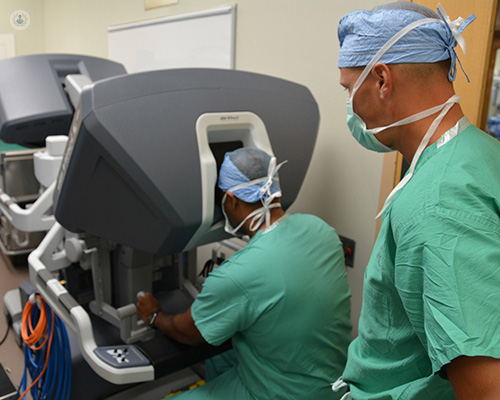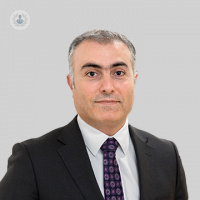New advances in the treatment of head and neck cancer: robotic-assisted surgery
Written in association with:Robotic-assisted surgery is a new development in minimally-invasive surgery, allowing surgeons to perform many different kinds of procedure with more expert precision, and providing a host of surgical benefits for the patient. Mr Zaid Awad, one of the few surgeons in the UK trained in robotic-assisted head and neck surgery, explains how robots are revolutionising the world of surgery, and what they can help treat.

What is robotic-assisted surgery?
Robotic-assisted surgery is now being used across many surgical specialties, and head and neck is one of the latest surgical specialties to start using and taking advantage of this new technology. In head and neck surgery, we utilise da Vinci robots in treating pharyngeal or throat cancers which are at an early stage in patients.
Da Vinci robots replace old fashioned surgery, which can be major and can cause a lot of complications, with a relatively high level of morbidity, a longer stay in hospital, and in some cases it can have an impact on the patient’s swallowing and speech.
How is robotic-assisted surgery performed?
The operative ability of the surgical robots allows us to do the surgery through the patient’s mouth without external and incisions or cuts. It allows the surgeon to be almost inside the patient’s throat and access early tumours of the throat, or the pharynx, and remove them with great deal of precision.
In cancer surgery, we often need to use a ‘rim’ of normal tissue around cancers to guarantee that the cancer doesn't come back. Having access to the robot allows us to reduce that, because the view that surgeons get, and the definition it provides, is much better in identifying the cancer and allowing us to differentiate it from normal tissue.
What is robotic-assisted head and neck surgery?
In head and neck surgery, we use the robots in the treatment of obstructive sleep apnoea, and at Imperial College London, we have started using it to treat early stage throat or oropharyngeal cancer. It also has other uses, such as treating thyroid cancer without producing a scar in the neck, and it can even sometimes be implemented for operations on the neck, making hidden incisions behind the face.
The operating surgical robot provides the surgeon with an endoscopic high-definition, 3D view of the inside of the patient’s throat. We can identify very small tumours very early and remove them with a great deal of precision, and without too much collateral damage. This means that the patient’s hospital stay is a lot shorter and they can return to work, normal swallowing, and normal speaking very quickly after their surgery.
What are the advantages of robotic-assisted surgery?
Robotic-assisted surgery brings various benefits not only to surgeons, but also to patients. Tumours that have been previously very difficult to identify are now easy to see and access, without having to submit the patient to major surgery with a great deal of complication and morbidity and prolonged hospital stay.


